Data:
These were found in Southern Wyoming. Elevation is about 6500 ft.
Email:
William
Discussion:
- Southern Wyoming has
nice exposures of the Green River Formation (Eocene), deposited in vast
lakes. The snails are probably Juga, though in popular literature they
are often misidentifed as "Turritella". Most of the other
specimens are bivalves (not brachiopods-they have left and right valves,
not top and bottom valves, and the fact that many are molds with the
shell lost suggests aragonitic bivalves rather than calcitic/phosphatic
brachiopods).
Possible non-marine bivalves would include unionoids and corbiculids, but I don't know the full fauna of the region.
There are also lots of vertebrates (if you have a whole fossil fish, it's probably from the Green River Formation).
Dr. David C.
- Greetings,
I was searching the web for mollusk resources, when I stumbled across your website and the 'mystery' section. I took particular interest in these shells from Wyoming: (I am unable to do much formatting with gmail and so if anything is unclear, please feel free to ask me)
The "possible Juga" is Goniobasis tenera (now Goniobasis is considered synonymous with Elimia, however, I've had an interesting yet brief discussion with R.T. Dillon at COFC about this (http://www.cofc.edu/~dillonr/cvweb.htm)
The bivalves are Pleiselliptio priscus (more ovate shape) and P. littoralacustris (more circular).
The ID is based on J.H. Hanley's PhD dissertation (Hanley is now deceased), which is the most thorough analysis of the mollusks of the Green River Formation. I don't have the original references handy, however, so I can't remember who coined the name. I did my master's work on the Green River, so I have spent quite some time with these
fossils.There are numerous collectors who label gastropod fossils from the Green River as 'turritellids' - these are all the internal casts of Goniobasis tenera. These shells are often found in thick coquinas and these rocks are cut and polished and labeled "Rattlesnake Agate" in some rock shops. There are a few other species of snail from the green
river, but rarely are they collected in any quantitiy (Viviparus sp. is the other that comes to mind).I've included a short bibliography of some more recent GR mollusk papers. I'm working on pleistocene terrestrial gastropods for my PhD, but have a soft spot in my heart for the Green River.
Hanley, J.H. 1974. Systematics, paleoecology, and biostratonomy of nonmarine Mollusca from the Green River and Wasatch formations (Eocene), southwestern Wyoming and northwestern Colorado. Unpublished Ph.D. dissertation, University of Wyoming, Laramie, Wyoming, 285p.
Hanley, J.H. 1976. Paleosynecology of nonmarine Mollusca from the Green River and Wasatch Formations (Eocene), southwestern Wyoming and northwestern Colorado, in scott, R.W. and West R.R., eds. Structure and Classification of Pleocommunities: Stroudsburg, Dowden, Hutchinson and Ross, p. 235-261.
Hanley, J.H. and Flores, R.M. 1987. Taphonomy and Paleoecology of Nonmarine Mollusca: Indicators of Alluvial Plain Lacustrine Sedimentation, Upper part of the Tongue River Member, Fort Union Formation (Paleocene), Northern Powder River Basin, Wyoming and Montana: Palaios v.2. p. 479-496.
Kuchta, M.A., Geary D.H., Carroll, A.H., 2000, Utility of nonmarine mollusca as paleoenvironmental indicators in the Green River Formation, Wyoming, Abstracts with Programs - Geological Society of
America, v. 32 no. 7, p. A12.Kuchta, M.A., 2000, Paleoenvironmental significance of nonmarine mollusca in the Luman Tongue of the Green River Formation, Wyoming, Unpublished Master's Thesis,
University of Wisconsin, Madison, 65p.
Cheers,
-matt kuchta--
Matt Kuchta
PhD student at UW Madison
(hiding out on the north shore)
210A Heller Hall, UMD campus
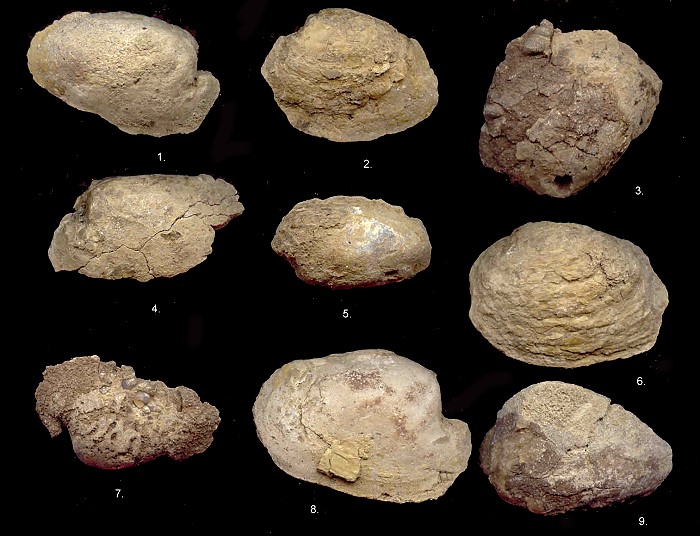
second row, third stone
is different shape then the others. Shell is still attached on both
sides.
1. 42x25x15 mm
Discussion:
2. 39x28x15 mm
Discussion:
3. 38x32x18 mm snail-8x5 mm
Discussion:
4. 44x25x18 mm
Discussion:
5. 35x20x14 mm
Discussion:
6. 43x31x20 mm
Discussion:
7. See # 18-20 below. 40x22x16 mm
8. See 17 below: 47x32x17 mm
9. 39x27x18 mm
Discussion:
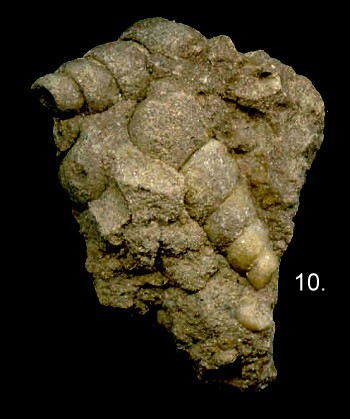
10. 18x6 mm
Discussion:
- possibly a turritella species...Avril B.
- probably Juga...Dr. David C.
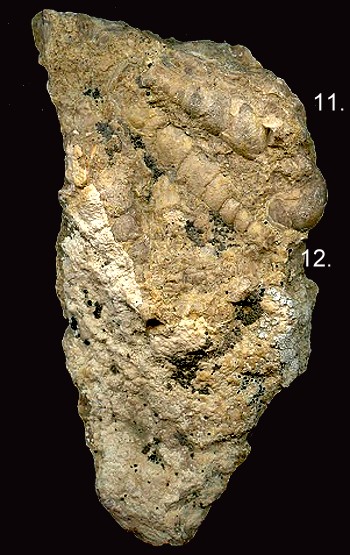
11. 20x5 mm
Discussion:
- possibly a turritella species...Avril B.
- probably Juga...Dr. David C.
12. 30x7 mm
Discussion:
- possibly a turritella species...Avril B.
- probably Juga...Dr. David C.
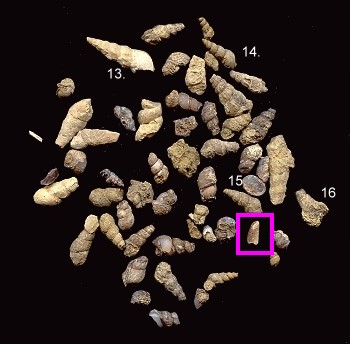 |
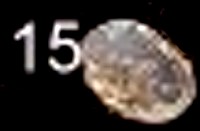 10x7 mm |
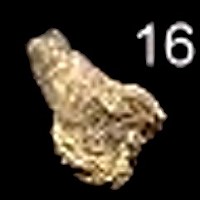 16x8 mm |
13. 30x10 mm
Discussion:
- possibly a turritella species...Avril B.
- probably Juga...Dr. David C.
14. 19x8 mm
Discussion:
-
possibly a turritella species...Avril B.
-
probably Juga...Dr. David C.
15. 10x7 mm (Two fossils straight below #15 is a tooth (claw) from North-central Wyoming. See next photo.
16. 16x8 mm
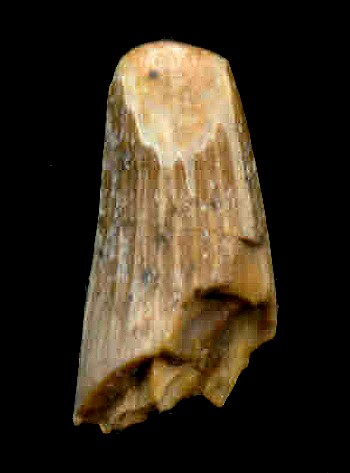
a tooth (claw) from North-central Wyoming
It measures
10 mm long (broken) 5mm wide at large end and 3mm at tip. The tip has
been worn down.
Discussion:
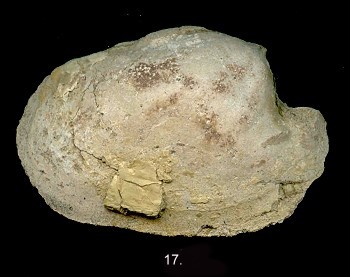
17. 47x32x17 mm
Discussion:
- possibly a brachiopod species...Avril B.
- bivalve...Dr. David C.
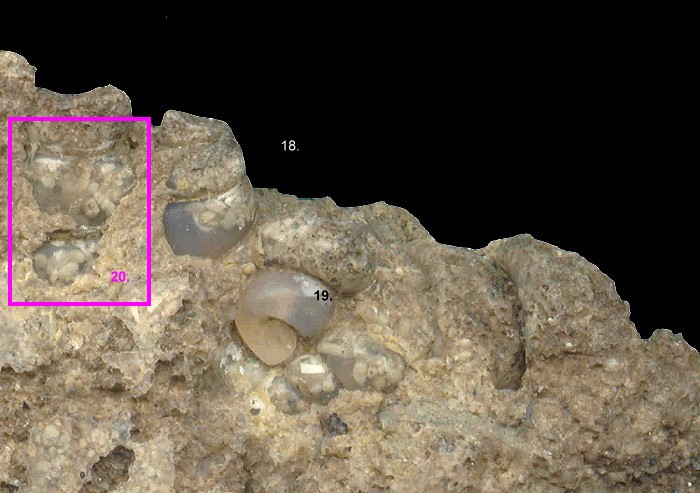
Rock is: 40x22x16 mm
18 4x3 mm
Discussion:
- probably Juga...Dr. David C.
19. 6x4 mm
Discussion:
- probably Juga...Dr. David C.
20. Inset
of above (Left of #18.): There appears to be snails within the
fossilized snail!!
Larger snail is 6x4 mm
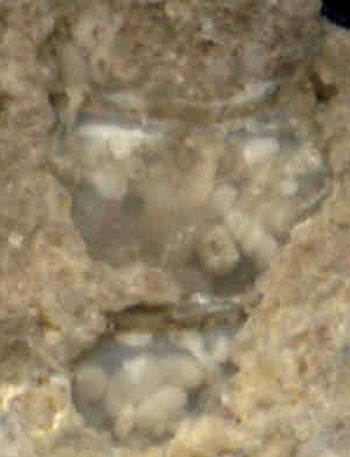
Discussion:
- Have
smaller turritella shells washed into and fossilized in larger turretla
shells? ...
Avril B. - probably Juga...Dr. David C.